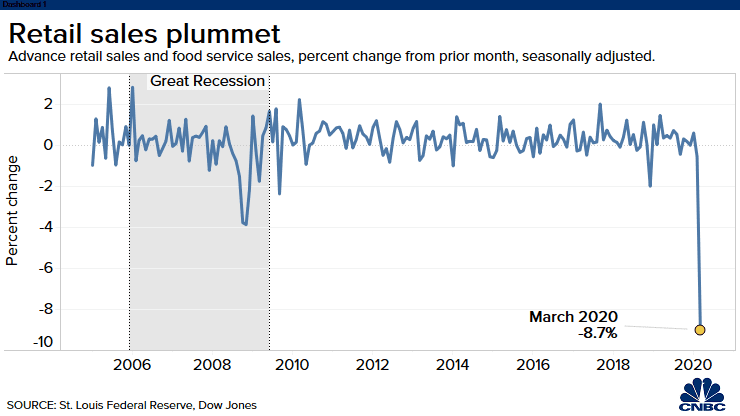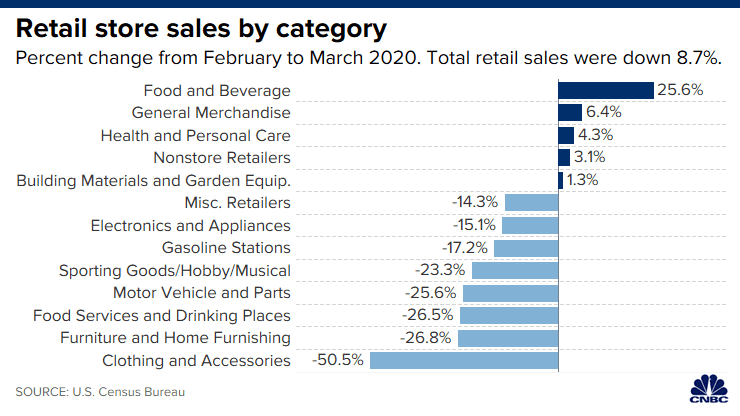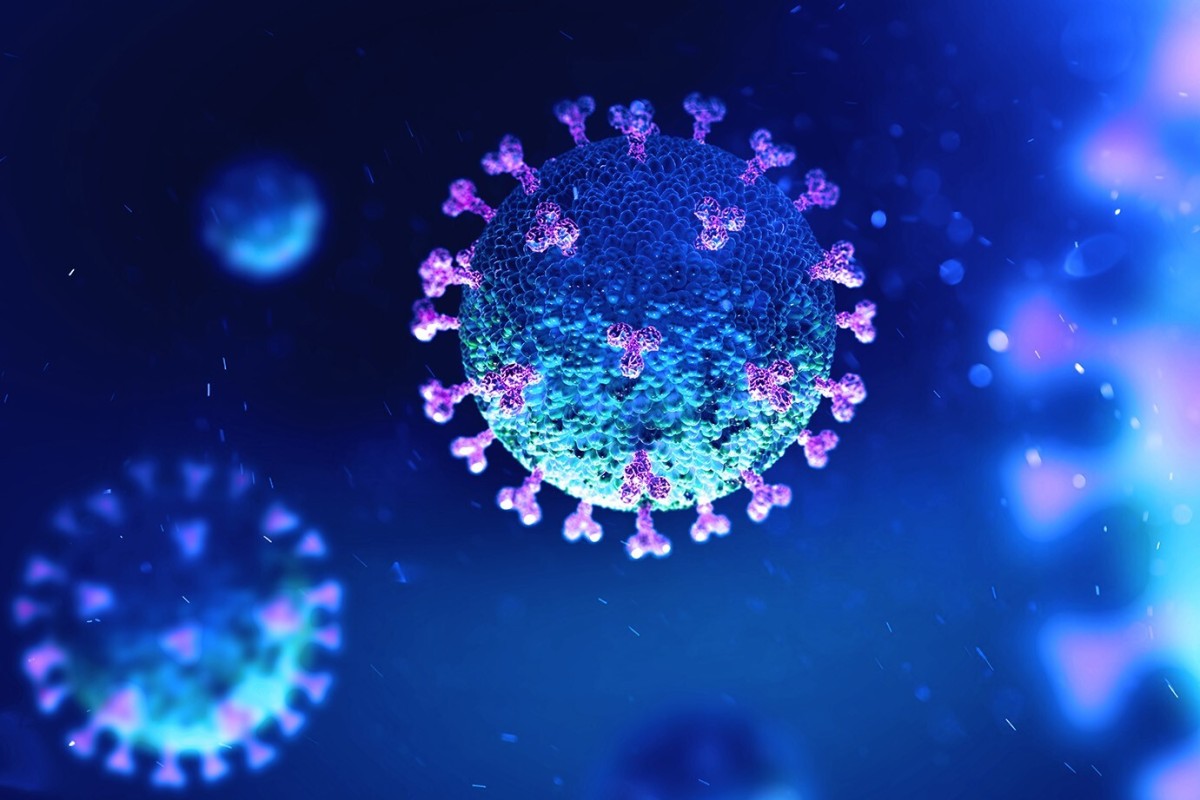Demonstrations in various parts of the world are now going on against lockdowns during a pandemic - despite prov of medical, financial, communication & food assistance. Perhaps now int community can understand the suffering of Kashmiris in IOJK as they suffer brutal oppression— Imran Khan (@ImranKhanPTI) April 21, 2020
Why can't wine prices go negative— Ian Cassel (@iancassel) April 20, 2020
This is exactly the right idea: "Of course, we want to reopen the economy, but we think we should do it on a different basis from before." https://t.co/dn7vzsjYxf— Jason Hickel (@jasonhickel) April 21, 2020
This ship can carry 2.5 BTC worh of oil pic.twitter.com/V3DbYESBV9— Crypto₿ull (@CryptoBull) April 20, 2020
@BDUTT you are doing a fabulous job! https://t.co/MCSmfpiard— Mini Menon (@MiniMenon) April 21, 2020
Brian Kemp's going to kill more Georgians than General Sherman— Adam Weinstein (@AdamWeinstein) April 20, 2020
I’ve had great “ratings” my whole life, there’s nothing unusual about that for me. The White House News Conference ratings are “through the roof”(Monday Night Football, Bachelor Finale , @nytimes) but I don’t care about that. I care about going around the Fake News to the PEOPLE!— Donald J. Trump (@realDonaldTrump) April 21, 2020
If you wanted to see one graph to convince you of the cost of that strange week (16th-23rd March) where we were told "to avoid pubs, clubs and restaurants" without actual lockdown being implemented... https://t.co/LndQqM9lz2 pic.twitter.com/oqmKcJbEEO— physicspodcast.com (@physicspod) April 21, 2020
Much of this symbolic stuff. Masks on the street is pointless. Masks at close range high touch points like checkout counters likely makes sense. Arresting people from individual or family use at parks is stupid (happening). Suspending team activities or jungle gym use ok.— Ventilator Sale AnonNonsense (@AnonNonsense) April 21, 2020
It don’t think it’s a sham but I think the admins have no idea what it’s like to be a true small business - most small business didn’t even know about PPP until funds ran out.— Stay home. Don’t hoard. (@douglastonmom) April 21, 2020
Agreement on $470B 'phase 3.5' coronavirus stimulus package now imminent, sources say
ONLY 1 IN 10 AMERICANS BACK 'LIBERATE' PROTESTS, POLL SHOWS
Trump Does It: An Executive Order To Suspend Immigration
The 52 most off-the-wall lines from Donald Trump's Sunday night coronavirus briefing
Most Rate Trump's Coronavirus Response Negatively
Georgia, Tennessee, SC announce plans to reopen some businesses, wind down coronavirus stay-at-home orders
America Is About to Witness the Biggest Labor Movement It’s Seen in Decades It took 40 years and a pandemic to stir up a worker revolution that’s about to hit corporate America .......... Japan had surrendered, ending World War II, but American meat packers, steelworkers, telephone installers, telegraph operators, and auto assemblers had something different from partying in mind. In rolling actions, they went on strike. After years of patriotic silence on the home front, these workers, along with unhappy roughnecks, lumberjacks, railroad engineers, and elevator operators — some 6 million workers in all — shut down their industries and some entire cities. Mainly they were seeking higher pay — and they got it, averaging 18% increases. ........ For the previous generation of labor, the goal post was the 40-hour week. New labor’s immediate aims are much more prosaic: a sensible face mask, a bottle of sanitizer, and some sick days. .........
For now at least, some of the country’s most powerful CEOs are clearly nervous.
....... The past four decades have been perhaps labor’s weakest since the Industrial Age. ......... .. For a half century, those working for hourly wages have won almost no real gains. The real average hourly wage in 2018 dollars adjusted for inflation was $22.65 in 2018, compared with $20.27 in 1964 — just an 11.7% gain ..... Real median hourly wages rose by only another 0.6% last year despite the sharp tightening of the job market and an increase in the minimum wage across the country .......... If teachers are an indicator of what is coming, Amazon, fast food restaurants, hospitals, and gig companies have a long, hot few years ahead. ............ In Arizona, teachers won a 20% raise, and Los Angeles teachers won a 6% raise. That triggered more strikes through much of 2019, with Chicago teachers, for one, winning a 16% pay raise. ......... postal workers across the country who keep sorting, transporting, and delivering the mail and packages to every one of our homes, with a toll so far of 12 dead, 600 confirmed with the virus, another 6,000 under quarantine — and very little apparent hope of a government bailout. .......... Workers are galvanizing and telling their stories through social media, rarely requiring the organizational meticulousness that made Old Labor so formidable. ......... “Business models based on ridiculous labor rates plus arbitrage where you foist all your costs onto the employee are coming to an end.” ......... When the virus struck Hilton Hotels starting in January, its global occupancy plummeted to somewhere between 10% and 15%, and most of its 6,100 managed and franchised properties closed. ......... Hospital management has been upbraided for suspending nurses who try to protect themselves by buying their own equipment and disciplining those who speak out. ........ “Business models based on ridiculous labor rates plus arbitrage where you foist all your costs onto the employee are coming to an end” ...... Until the virus, the notion of unionized tech workers was just that — a notion that seemed to violate the very spirit of Silicon Valley. It’s still hard to imagine unionized software engineers. But it’s equally difficult to say where the boundaries of the possible lie. ........... In February, employees at Kickstarter, the crowdfunding platform, voted to unionize, becoming the first white-collar tech company staff to do so ......... The Teamsters are making an open run at organizing other Silicon Valley workers. If you put Covid-19 out of your mind, the move is mind-blowing. ...............The biggest fish of all in terms of tech unionization is Amazon.
The e-commerce giant is beset with worker complaints just as it has begun to transcend its barbarian image, repositioning itself as a public good at the very center of the U.S. economy. .......... railroad workers shut down transportation across the country in labor’s peak .......... what is more local than the grocery bagger, the postman, the nurse? ....... their pluck, beaten out of them by the years of layoffs, has returned with Covid-19.Paul Krugman: the Trump administration and its Senate allies are botching pandemic economics — and at some level they know that. So they’re desperate to wish the problem away before the failure of their response becomes too obvious. ........ To be fair, the problems posed by Covid-19 are both novel and incredibly fast moving. Still, both logic and other countries’ experiences have given us a pretty good idea of what we should be doing right now. First, lock down high-contact economic activities, to slow the viral spread. Second, provide generous disaster relief to those whose incomes have been cut off by the lockdown. Third, rapidly ramp up testing and tracking, so that when we (cautiously) restart normal life we can quickly identify and neutralize any emergent hot spots. .............. The trouble is that we’re falling down badly on (2) and (3). ......... there is a huge backlog of unprocessed claims, and millions of Americans have yet to see a dime. ........ Canada introduced an Emergency Response Benefit for those losing income as a result of the coronavirus, implemented directly by the federal government and easily accessible via a government portal and hotline; the program began paying out up to $2,000 a month almost immediately. .............
Meanwhile, those small business loans are being run through private banks, under criteria that let huge restaurant and hotel chains claim that each of their locations is a small business; not surprisingly, these giants, which have strong relationships with big banks, quickly snapped up almost all the money, with little flowing to the intended beneficiaries.
.............. And behind this failure to provide economic relief, we’re not seeing anything like the rapid rise in testing we need to start reopening safely. ........ A different president might have responded to these developments with a crash effort to fix the problems .............. But Trump being Trump, he’s disavowing any responsibility, instead pressuring states to ignore the health risks and abandon the social distancing that has blunted the pandemic. .........this isn’t just cruel, it’s politically stupid. As we’ve just seen, viruses move fast. A few days ago we were starting to see signs that Covid-19 might be peaking. But relax our vigilance, even a bit, and a second, bigger wave of deaths could easily happen well before the election.
........ I’m getting even more scared than I was.It’s the End of the World Economy as We Know It Experts suggest there will be “a rethink of how much any country wants to be reliant on any other country.” ............ When big convulsive economic events happen, the implications tend to take years to play out, and spiral in unpredictable directions. ........ Who would have thought that a crisis that began with mortgage defaults in American suburbs in 2007 would lead to a fiscal crisis in Greece in 2010? Or that a stock market crash in New York in 1929 would contribute to the rise of fascists in Europe in the 1930s? ..............
The world economy is an infinitely complicated web of interconnections.
.......... opens the possibility of a global economy completely different from the one that has prevailed in recent decades. ......... Crises have a way of bringing to the fore issues that are easy to ignore in good times. .......... The idea of a world economy with the United States at its center was already falling apart, between the rise of China and America’s own turn toward nationalism. ......... “There will be a rethink of how much any country wants to be reliant on any other country” .........Senator Lindsey Graham suggested that the United States should punish China for failing to contain the virus by canceling debt the Chinese government owns — a step that would risk the role of U.S. Treasury bonds as the bedrock of the world financial system.
............. Trade as a share of global G.D.P. peaked in 2008 and has trended lower ever since. .........companies are actively talking about resilience
........ China has reoriented its economic strategy, aiming to be not a low-cost manufacturing hub for the world but the maker of technologically advanced products like aircraft and telecommunications equipment. That has made Americans, Europeans and the Japanese all the more reluctant to have major operations in China, for fear of intellectual property theft. ............. Under the Trump administration, the United States has experienced strain with even traditional allies in Western Europe. Put it all together, and a more every-nation-for-itself mentality was already becoming ingrained before Covid-19, in ways the pandemic seems to be reinforcing. ...........the trends that were already in motion before this pandemic will be accelerated
........... In a past episode of de-globalization — the unwinding of global commerce that took place amid World War I and the 1918 flu epidemic — there was also a remaking of the global financial system, with the British pound losing its pre-eminence. ............ initial signs point the other way: toward the dollar’s becoming even more entrenched at the center of the global financial system. ............ The U.S. Federal Reserve has opened swap lines with 14 overseas central banks — which enables them to pump dollars into their domestic banking systems — and started a novel program that lets other countries obtain dollars by pledging Treasury bonds as collateral. Those moves are helping ensure that a global dollar shortage doesn’t paralyze the world economy. ............... European officials have been reluctant to take steps that would make the euro more central to the world currency system, such as issuing bonds that are jointly guaranteed by the countries of the eurozone. And China has, if anything, been reluctant to remake its financial system in ways that could enable the renminbi to become more crucial to world commerce, such as allowing free capital flows in and out of the currency. ............ “The dollar system is inherently unstable, but so is a bicycle,” said Mr. Tooze, the historian. “They’re unstable, but if you’re a skilled rider of them, they’re great. And the Fed has demonstrated it’s a skilled rider of the dollar hegemony bike.” .............At times over the last 12 years, it has felt as if the world were reliving the period of 1918 to 1939, but as if told by a forgetful student who was getting the events out of order. That era also featured a global financial collapse; a rise of authoritarian governments; the emergence of a new economic superpower (the United States then, China now); and a pandemic, though not in that sequence.
The Growing Challenges for Monetary Policy in the current International Monetary and Financial System Speech given by Mark Carney, Governor of the Bank of England
A new map shows that you can’t maintain social distancing on many New York City sidewalks https://t.co/YlljsQhsrd pic.twitter.com/dX39LX7fKk
— The Verge (@verge) April 21, 2020
Coronavirus News (51) https://t.co/sJyQ7DxNmu #Immigration #coronavirus #CoronavirusOutbreak #CoronavirusUSA #Corona #CoronavirusPandemic #COVID19 #COVIDー19 #COVID2019 #COVID #lockdown #pandemic #TrumpLiesPeopleDie #DonaldTrump
— Paramendra Kumar Bhagat (@paramendra) April 21, 2020
Hear, hear. 5 Reasons Why Women Lead Better in COVID https://t.co/PlCJnsc1B4
— Susan McPherson (@susanmcp1) April 21, 2020
Around 60% of new infectious diseases come from animals.
— World Economic Forum (@wef) April 21, 2020
🔎 Learn more about how coronavirus is affecting nature: https://t.co/D2Tj0826vX pic.twitter.com/jU6Nc4tioT

















